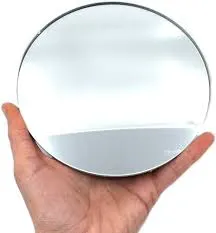

The Rise of Slumping Float Glass A Modern Craftsmanship
Slumping float glass, an innovative technique in the realm of glass art and design, has gained significant popularity in recent years. This method not only showcases the beauty of glass but also emphasizes its versatility as a material for artistic and functional purposes. In this article, we will explore what slumping float glass is, its applications, and its growing significance in contemporary craftsmanship.
Slumping is a glass-forming technique that involves heating glass to a temperature where it becomes soft and pliable. Float glass, known for its smooth and clear surface, is ideal for this process. Traditionally, float glass is made by floating molten glass on top of molten tin, creating a perfectly flat, uniform sheet. When slumping float glass, artists take advantage of its properties to create dynamic shapes and forms, turning a flat sheet into a three-dimensional piece of art.
The process itself is both an art and a science. Initially, artists cut the float glass into desired shapes and sizes. These pieces are then placed in a kiln that is preheated to a specific temperature, typically between 1200°F and 1400°F (about 650°C to 750°C). As the glass heats up, it starts to soften and begins to sink into molds, which can be made of ceramic or metal. This allows the glass to take on the contours of the mold, resulting in unique and intricate designs.
One of the most appealing aspects of slumping float glass is its ability to produce functional objects and art
. From artistic panels and sculptures to serving dishes and architectural elements, the possibilities are endless. The translucency and clarity of float glass can be enhanced through various techniques, such as painting, etching, or incorporating colored glass, which adds layers of depth and complexity to the final piece.
In addition to its aesthetic qualities, slumping float glass has practical applications in architecture and interior design. Designers and architects are increasingly incorporating slumped glass into their projects, utilizing it for windows, skylights, and interior dividers. Its ability to diffuse light while providing privacy makes it an attractive option for modern spaces. Furthermore, using glass in construction contributes to sustainable building practices, as it can improve energy efficiency by harnessing natural light.
The growth of slumping float glass also reflects a broader trend towards handmade, artisanal products in an age dominated by mass production. As consumers become more conscious of their purchasing decisions, there is a rising demand for unique, handcrafted items that tell a story and showcase craftsmanship. Slumped glass, with its distinctive characteristics and artistic flair, perfectly fits this niche market.
Moreover, the process of creating slumped float glass can be deeply meditative for artists. The act of manipulating glass, observing its transformation under heat, and the surprises that come with each piece create a direct connection between the artist and their work. This connection fosters a sense of fulfillment and joy that resonates with both the creator and the audience.
In conclusion, slumping float glass represents a fusion of artistry and functionality, making it a significant medium in modern glass design. As more artists and designers explore the possibilities of this technique, it continues to evolve, pushing the boundaries of what glass can achieve. Whether in a gallery, a home, or an office space, slumped float glass brings an element of elegance and creativity that enhances our environments. As this craft gains traction, it is a testament to the enduring charm of handmade artistry in a rapidly changing world.